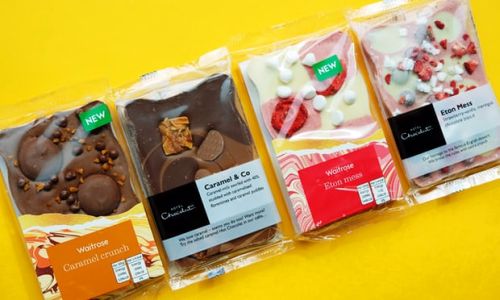After the Toblerone chocolate war with Poundland, there is another matter of copying of design of a chocolate. Hotel Chocolat produced its flagship chocolates 'Slab' which were alleged to be copied by Waitrose another chocolate selling company. A series of tweets suggest that the selling of similar looking chocolates created confusion in the minds of the consumers and made the consumers think that Hotel Chocolat is producing chocolates for Waitrose.


The chocolates sold by Waitrose were identical to the chocolates of Hotel Chocolat and had exactly the same wavy design and packaging as Slab but low quality ingredients were been used by the Waitrose in their chocolates. The Hotel Chocolat co-founder initiating twitter war to protect the design and reputation of their products. Hotel Chocolat issued a legal threat and offered amnesty to their customers who bought Waitrose's chocolate under an impression that they bought Hotel Chocolat's Slab.1 The step was taken to protect the brand image and the reputation of the company. Even the flavours offered by Waitrose are identical to Hotel Chocolat.Waitrose's Caramel Crunch shares similar characteristics with Hotel Chocolat's Caramel & Co and Waitrose sell a similar strawberry bar as Hotel Chocolat under the same name 'Eton Mess'. The design of Hotel Chocolat's Slab is registered design under registration number 001438378-0011 and therefore, any resemblance to the design will amount to infringement.

Design Law In United Kingdom
United Kingdom offers protection to both registered and unregistered design. In order to be registrable, a design must be new (meaning that it has not been disclosed more than one year before filing) and possess individual character (meaning that the overall impression it produces on the informed user must differ from the overall impression produced on such a user by any design which has been made available to the public).2 The registration of a design gives the registered proprietor the exclusive right to use it and to prevent any third party from using that design without consent.
The difference between unregistered and registered design is the level of protection afforded to it. In an infringement case, for an unregistered design, it must be proved that the other person copied you design without the knowledge of the existing design and for a registered design, it is sufficient to prove that the two products are too similar. An unregistered design is protected for 3 years whereas a registered design is protected for maximum 25 years.
Similar Instances
There were similar instances of imitation of design where the similar design was considered to be infringing the original design.The case of Tatty Devine v Claire's Accessories is similar to the present dispute as even Tatty had got her design registered with the UK IP office and Claire had to cease using the design.3 In another dispute, Saucy Fish Company claimed supermarket's products resembled its ownAldi salmon fillets have very similar packaging and recipes to Saucy Fish Co. and the High Court agreed and demanded the retailer remove the product.4 Had the present dispute came to the Court then there were a high chance of ruling in favour of Hotel 'Chocolat' as it is a registered design and Waitrose's chocolate were identical to their chocolates. It is necessary to protect the designs against the imitators as it affects their reputation and may result in dip in sales.
End of the 'Chocolat' Dispute
The dispute has ended amicably with Waitrose agreeing "to stop making the totally coincidentally very similar bars", with no court action taken.5 Hotel Chocolat avoided taking a legal step against Waitrose owing to the complexities of the legal system of UK. This is an important lesson for other brand owners to protect their brand value and intellectual property. To address the issue of imitators, a company can have in-house anti-counterfeit investigators or external take-down specialists and could use monitoring services to detect the retailers selling imitated products. The case is so popular due to its unconventional protection given to design of slabs and the countermeasures taken by the Hotel Chocolat which weren't legal measures but effective nonetheless.The tweets give a view of the intentions and reasons for the brand to offer amnesty to its customers and why such off-beat technique was used instead of direct legal threat.
Footnotes
[3] https://www.theguardian.com/fashion/fashion-blog/2012/feb/24/claires-accessories-tatty-devine
The content of this article is intended to provide a general guide to the subject matter. Specialist advice should be sought about your specific circumstances.
